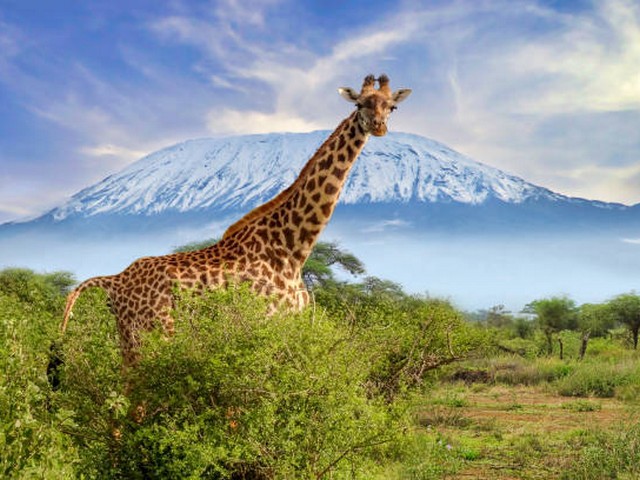Discover the Best Kilimanjaro Experience: Northern Circuit vs Lemosho Route
When it comes to climbing Mount Kilimanjaro, the roof of Africa, every step unfolds a new layer of natural beauty and a thrilling challenge. Selecting the right route can significantly influence your climbing experience. At Kilimanjaro Centre for Trekking and Ecotourism (KCTE), we specialize in creating memorable journeys up this majestic mountain. Today, let’s delve into a captivating comparison between two of the most scenic routes: the Northern Circuit and the Lemosho Route.
The Path Less Travelled: Kilimanjaro Northern Circuit
Embracing Tranquility and Unmatched Scenery
The Northern Circuit is the newest and longest route on Mount Kilimanjaro. It offers an unparalleled opportunity to fully immerse yourself in the varied landscapes of Kilimanjaro. This route takes you around the quiet, seldom-visited northern slopes, providing a unique and tranquil trekking experience.
Why Choose the Northern Circuit?
- Extended Acclimatization Time: Spanning 9 days, this route allows your body to adjust to the altitude, which significantly increases your summit success rate.
- Spectacular Views: Experience 360-degree panoramas including views of the quiet, wild northern side of Kilimanjaro that few ever see.
- Reduced Crowds: The path less trodden means you have the serene beauty of Africa’s highest peak almost to yourself.
Ideal for:
Adventurers seeking a unique and less-traveled route that offers ample time for acclimatization and enjoys nature without the rush.
The Beloved Trail: Kilimanjaro Lemosho Route
A Beautiful and Remote Start
Lemosho, starting from Kilimanjaro’s western approach, is often praised for its beauty and effectiveness in helping climbers acclimatize. The route takes you through lush rainforests, alpine deserts, and barren arctic zones before reaching the summit.
Why Choose the Lemosho Route?
- High Summit Success Rate: Like the Northern Circuit, Lemosho offers a longer trek that helps hikers adjust to the altitude, thereby enhancing the summit success rate.
- Diverse Landscapes: From dense rainforests to vast moorlands, Lemosho offers a dynamic scenery that captivates many.
- Strategic Start Point: Its remote starting point reduces the number of fellow trekkers initially, allowing for a peaceful beginning to your climb.
Ideal for:
Those who are looking for a scenic trek that combines challenge with spectacular vistas, diverse habitats, and effective acclimatization.
Comparing the Titans: Which Route Should You Choose?
Choosing between the Northern Circuit and Lemosho ultimately depends on what you seek from your Kilimanjaro adventure. Both routes provide ample acclimatization time and spectacular views but cater to different preferences in terms of duration and solitude.
- Duration and Difficulty: The Northern Circuit is longer, potentially more challenging because of its duration, but it’s perfect for those who prefer a more extended trek. Lemosho, while not short, offers a slightly more compressed schedule.
- Scenery and Solitude: Both routes promise stunning natural beauty. If absolute solitude is what you seek, the Northern Circuit’s remote paths provide an edge over the more popular Lemosho.
- Wildlife Opportunities: Starting through dense forests, Lemosho might offer more opportunities for wildlife sightings, adding an extra layer of thrill to your trek.
Why Climb with Kilimanjaro Centre for Trekking and Ecotourism (KCTE)?
At KCTE, we’re not just about guiding climbers up a mountain; we are about crafting unforgettable journeys. Climbing Kilimanjaro is a monumental experience, and we ensure it’s enriching, safe, and resonant with the spirit of true adventure. Our experienced guides, comprehensive climb support, and dedication to ecotourism make us the preferred choice for climbers globally.
Frequently Asked Questions
What is the best time to climb Kilimanjaro?
The best times are during the dry seasons: January to mid-March and June to October. These months offer the clearest skies and the fewest crowds.
How fit do I need to be to climb Kilimanjaro?
While you don’t need to be an athlete, a good level of fitness is required. Training for at least 3 months prior to your trek is recommended.
What should I pack for a Kilimanjaro trek?
Essential items include thermal layers, hiking boots, a sleeping bag suitable for low temperatures, plenty of water storage, and a headlamp. A detailed packing list will be provided upon booking.
Can I climb Kilimanjaro alone?
For safety and environmental reasons, climbing alone is not permitted. You must climb with a registered and licensed guide, which KCTE provides.
How does KCTE promote sustainable tourism?
We adhere strictly to the Leave No Trace principles, employ local staff at fair wages, and partake in regular clean-up expeditions. Sustainability is core to our operations.
Embark on Your Kilimanjaro Adventure
Whether you choose the path less trodden by the Northern Circuit or the beautifully remote Lemosho Route, Kilimanjaro promises an epic adventure that’s just waiting to be conquered. Ready to stand atop Africa? Book your Kilimanjaro climbing adventure with Kilimanjaro Centre for Trekking and Ecotourism (KCTE) today, and take the first step towards a journey you will recount for a lifetime.
Let the mountains call you to adventure. Embrace the challenge, enjoy the preparation, and celebrate the success with KCTE. Your journey to the roof of Africa begins here!




